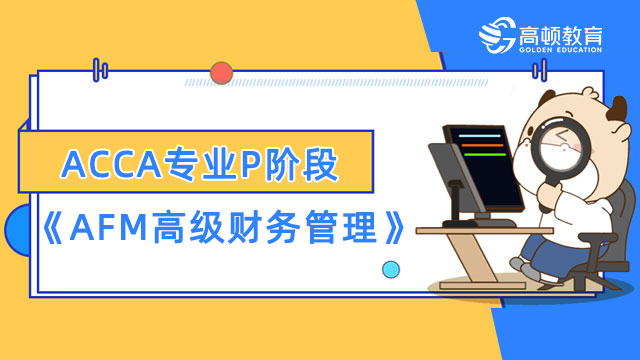ACCA考试《P5高级业绩管理》知识辅导
来源:
高顿网校
2015-05-07
2015年6月ACCA考试即将来临,高顿网校小编竭力为考生提供更多的备考信息,以便顺利通过考试。
ENVIRONMENTAL MANAGEMENT ACCOUNTING
by Shane Johnson 01 Jun 2004 This article is intended to help students understand environmental management accounting, its increasing importance, and new developments. The global profile of environmental issues has risen significantly during the past two decades, precipitated in part by major incidents such as the Bhopal chemical leak (1984) and the Exxon Valdez oil spill (1989)。 These events received worldwide media attention and increased concerns over major issues such as global warming, depletion of non-renewable resources, and loss of natural habitats. This has led to a general questioning of business practices and numerous calls for change. These questions have not only been raised by organisations such as Friends of the Earth, Greenpeace, or groups of 'eco-warriors', but from the United Nations, the European Union, the UK government, the British Bankers Association, insurance companies and pension funds. Recognition that our current way of life poses a threat to us and our planet, has led to global agreements on action to prevent future environmental damage. Such agreements include the Montreal Protocol, the Rio Declaration, and the Kyoto Protocol. Businesses have become increasingly aware of the environmental implications of their operations, products and services. Environmental risks cannot be ignored, they are now as much a part of running a successful business as product design, marketing, and sound financial management. Poor environmental behaviour may have a real adverse impact on the business and its finances. Punishment includes fines, increased liability to environmental taxes, loss in value of land, destruction of brand values, loss of sales, consumer boycotts, inability to secure finance, loss of insurance cover, contingent liabilities, law suits, and damage to corporate image. Nearly all aspects of business are affected by environmental pressures, including accounting. From an accounting perspective, the initial pressures were felt in external reporting, including environmental disclosures in financial reports and/or the production of separate environmental accounts. Much has been written about the nature and quality of these accounts (see Gray and Bebbington, 2001 for an introduction into this area)。 However, environmental issues cannot be dealt with solely through external reporting. Environmental issues need to be managed before they can be reported on, and this requires changes to management accounting systems.
Environmental Review of Conventional Management Accounting In an ideal world, organisations would reflect environmental factors in their accounting processes via the identification of the environmental costs attached to products, processes, and services. Nevertheless, many existing conventional accounting systems are unable to deal adequately with environmental costs and as a result simply attribute them to general overhead accounts. Consequently, managers are unaware of these costs, have no information with which to manage them and have no incentive to reduce them (United Nations Division for Sustainable Development (UNDSD), 2003))。 It must be recognised that most management accounting techniques significantly underestimate the cost of poor environmental behaviour. Many overestimate the cost and underestimate the benefits of improving environmental practices. Management accounting techniques can distort and misrepresent environmental issues, leading to managers making decisions that are bad for businesses and bad for the environment. The most obvious example relates to energy usage. A recent UK government publicity campaign reports that companies are spending, on average, 30% too much on energy through inefficient practices. With good energy management, we could reduce the environmental impact of energy production by 30% and slash 30% of organisations' energy expenditure. Frost and Wilmhurst (2000) suggest that by failing to reform management accounting practices to incorporate environmental concerns, organisations are unaware of the impact on profit and loss accounts and the balance sheet impact of environment-related activities. Moreover, they miss out on identifying cost reduction and other improvement opportunities, employ incorrect product/service pricing, mix and development decisions. This leads to a failure to enhance customer value, while increasing the risk profile of investments and other decisions with long-term consequences. If management accounting as a discipline is to contribute to improving the environmental performance of organisations, then it has to change. Environmental Management Accounting (EMA) is an attempt to integrate best management accounting thinking and practice with best environmental management thinking and practice. Environmental Management Accounting EMA is the generation and analysis of both financial and non-financial information in order to support internal environmental management processes. It is complementary to the conventional financial management accounting approach, with the aim to develop appropriate mechanisms that assist in the identification and allocation of environment-related costs (Bennett and James (1998a), Frost and Wilmhurst (2000))。 The major areas for the application for EMA are:
product pricing
budgeting
investment appraisal
calculating costs and
savings of environmental projects, or setting quantified performance targets.
EMA is as wide-ranging in its scope, techniques and focus as normal management accounting. Burritt et al (2001) stated: 'there is still no precision in the terminology associated with EMA'. They viewed EMA as being an application of conventional accounting that is concerned with the environmentally-induced impacts of companies, measured in monetary units, and company-related impacts on environmental systems, expressed in physical units. EMA can be viewed as a part of the environmental accounting framework and is defined as 'using monetary and physical information for internal management use'. Burritt et al developed a multi-dimensional framework of EMA (Figure 1)。 Their framework considers the distinctions between five dimensions:
internal versus external
physical versus monetary classifications
past and future timeframes
short and long terms and
ad hoc versus routine information gathering in the proposed framework for the application of EMA.
Figure 1: Proposed framework of EMA according to Burritt et al (2001)
Within this framework the different techniques of EMA - such as environmental lifecycle costing or environmental cost accounting - can be placed and assigned. The management of a company can choose appropriate tools on the basis of their information needs. Similarly, in a series of publications (1997, 1998a, 1998b), Bennett and James describe the diverse range and scope of environmental management accounting. They provide a set of useful models, one of which is 'The Environment-Related Management Accounting Pyramid', to help evaluate environmental management accounting practices as well as to help in the design and implementation of new
systems. According to Bennett and James (1998a) (Figure 2), EMA is concerned with gathering data related to the environment (lowest levels), which are converted through techniques and processes (middle level) into information which is useful for managers (top)。 Key data is both non-financial and financial in nature. Management accounting techniques such as performance measurement, operational budgeting, costing or pricing are used for the transformation.
ACCA考试之P5高级业绩管理知识辅导
Figure 2: The environment-related management accounting pyramid, Bennett and James (1998A)
Examples of techniques Redefining Costs A literature review reveals various approaches to the definition of environmental costs. In 1998, the US Environmental Protection Agency argued that the definition of environmental costs depended on how a company intends to use the information, for example in capital budgeting or product design. They introduced terminology that distinguishes between conventional costs, potentially hidden costs, contingent costs, and image and relationship costs. Conventional costs are those raw material and energy costs having environmental relevance. Potentially hidden costs are those which are captured by accounting systems, but then lose their identity in 'overheads'. Contingent costs may be incurred at a future date - for example costs for cleaning up. They are also referred to as contingent liabilities. Image and relationship costs are intangible in nature and include, for example, the costs of producing environmental reports. However, such costs pale into insignificance when compared with the costs associated with being seen to behave in an irresponsible manner. The infamous Brent Spar incident that cost the Shell oil company millions of pounds in terms of lost revenues via the resultant consumer boycott, is an example of the powerful influence that environmental concern has in today's business environment. Shell learned the
lesson, albeit somewhat belatedly, and as a result completely re-engineered its environmental management system. ACCA has also published a research report outlining an agenda for action on full cost accounting (Bebbington, Gray, Hibbit and Kirk, 2001), which contains a detailed review of the business case for adopting full environmental costing. One example of the potential gains from using full costing (sometimes referred to as lifecycle costing, Bennett and James (1998b)) can be seen in the case of Xerox limited. Xerox limited, a subsidiary of Xerox Corporation, introduced the concept of lifecycle costing for its logistic chain. The core business of Xerox limited is manufacturing photocopiers, which are leased rather than sold. This means the machines are returned to Xerox limited at the end of their lease. Previously, machines were shipped in a range of different types of packaging, which could rarely be re-used by customers to return the old copiers. The customer had to dispose of the original packaging and to provide new packaging to return the machine at the end of its lease, which in turn could not be used to re-ship other machines. This meant Xerox lost the original costs and had to bear the costs of disposal of the packaging. A new system was invented which used a standard pack (tote)。 Two types of totes were introduced to suit the entire range of products sold by Xerox. Totes can be used for both new machines delivery and return carcasses. The whole-chain cost analysis showed the considerably lower cost of the tote system, compared to the previously existing system and the supply chain became more visible. The tote system resulted not only in cost savings but also in reduced 'de-pack' times and improved customer relations (Bennett and James, 1998b)。 UNDSD (2003) described total corporate environmental costs as environmental protection costs (emission treatment and pollution prevention) plus costs of wasted materials, plus costs of wasted capital and labour. Waste in this context means production inefficiency (purchase value of non-material output)。 UNDSD stated that wasted materials account for 40% to 90% of environmental costs according to a survey. One should recognise that environmental costs are not a separate type of cost; rather they are part of money flowing throughout a corporation. The main difficulty associated with environmental costs is their identification and allocation. According to UNDSD (2003), conventional accounting systems tend to attribute many of the environmental costs to general overhead accounts with the result that they are 'hidden' from management. Thus, management is often unaware of the extent of environmental costs and cannot identify opportunities for cost savings. EMA attempts to make all relevant, significant costs visible so that they can be considered when making business decisions (Jasch, 2003)。 UNDSD (2003) identified management accounting techniques which are useful for the identification and allocation of environmental costs as: input/output analysis, flow cost accounting,
activity-based costing (ABC), and lifecycle costing. Input/output analysis The input/output analysis is a technique that can provide useful environmental information, sometimes referred to as mass balance (Envirowise, 2003)。 This technique records material flows with the idea that 'what comes in must go out - or be stored' (Jasch, 2003)。 As shown in Figure 3, the purchased input is regarded as 100% and is balanced against the outputs - which are the produced, sold and stored goods and the residual (regarded as waste)。 Materials are measured in physical units and include energy and water. At the end of the process, the material flows can be expressed in monetary units. Process flow charts can help to trace inputs and outputs, in particular waste. They demonstrate the details of the processes so that the relevant information can be allocated to main activities.
Figure 3: Input/output analysis according to Envirowise (2003)
Process flow charts bring together technical information and cost accounting information (UNDSD, 2003)。 Flow cost accounting is a tool of a new management accounting approach - flow management. It aims to '…organise production end-to-end in terms of flows of materials and information -all structured in an efficient, objective-oriented manner' (UNDSD, 2003)。 It is more than a simple assessment of environmental costs, because it is focused on assessment of total costs of production. Flow management involves not only material flows, but also the organisational structure. Classic material flows are recorded as well as material losses incurred at various stages of production. Flow cost accounting makes material flows transparent by using various data, which are quantities (physical data), costs (monetary data) and values (quantities x costs)。 The material flows are divided into three categories, material, system, and delivery and disposal, as shown in Figure 4. The material values and costs apply to the materials which are involved in the various processes. The system values and costs are the in-house handling costs, which are '…incurred inside the company for the purpose of maintaining and supporting material throughput, e.g. personnel costs or depreciation,' (UNDSD, 2003)。
Figure 4: The basic idea of flow cost accounting according to UNDSD (2003)
The delivery and disposal values and costs refer to the costs of flows leaving the company, for example transport costs or cost of disposing waste. EMA can benefit from flow cost accounting because it aims to reduce the quantities of materials, which leads to increased ecological efficiency (UNDSD, 2003)。 Environmental Activity-Based Accounting Activity-based costing (ABC) '…represents a method of managerial cost accounting that allocates all internal costs to the cost centres and cost drivers on the basis of the activities that caused the costs,' (UNDSD, 2003)。 ABC applied to environmental costs distinguishes between environment-related costs and environment-driven costs. The former are attributed to joint environmental cost centres, for example incinerators or sewage plants. The latter are hidden in the general overheads and do not relate directly to a joint environmental cost centre, e.g. increased depreciation or higher cost of staff. Nevertheless they vary with the amount of throughput. Schaltegger and Muller (1998) stated 'the choice of an adequate allocation key is crucial for obtaining correct information'. The four main allocation keys are:
volume of emissions or waste
toxicity of emission and waste treated
environmental impact added (volume x input per unit of volume) volume of the emissions treated and
the relative costs of treating different kinds of emissions.
LifeCycle Costing
Environmental Management as part of Total Quality Management The pursuit of environmental quality management via the development of an Environmental Management System (EMS) can only be achieved if 'environmental audit' is a concomitant feature of such a system. In this respect the organisation becomes self-regulating and the undertaking of environmental audits on a regular basis provides the platform for organisations to adopt a self-critical and analytical posture as part of their routine organisational management processes. Organisations should be striving to achieve an integrated environmental strategy underpinned by the same type of culture that is required for the successful operation of a programme of total quality management (TQM)。
It is arguable that the two are inextricably linked insofar as good environmental management is increasingly recognised as an essential component of TQM. In common with TQM, the focus is upon 'continuous improvement' and the pursuit of excellence. Such organisations pursue objectives that may include zero complaints, zero spills, zero pollution, zero waste and zero accidents. Information systems need to be able to support such environmental objectives via the provision of feedback - on the success or otherwise - of the organisational efforts in achieving such objectives. This approach to environmental quality management requires the development of environmental performance measures and indicators that will enable a comprehensive review of environmental performance to be undertaken. Many - if not all - total quality management accounting techniques can be modified and effectively adopted to help manage environmental issues. Conclusion It can be said that most companies do not know about the extent of their environmental costs and tend to underestimate them. This leads to distorted calculations of improvement options. For example, Amoco Yorktown Refinery estimated their environmental costs at 3% of non-crude operational costs. Actually they comprised 22% of non-crude operating costs as the case study of Ditz et al (1998) revealed. However, the study also discovered a large proportion of environmental costs were caused by other processes that had not been identified by Amoco. EMA can solve these problems. The above-mentioned accounting techniques are useful for EMA to identify and allocate environmental costs. In addition, there are alternative techniques to estimate environmental costs such as the 'environmental cost decision tree' as described by Rimer (2000)。 The most significant problem of EMA lies in the absence of a clear definition of environmental costs. This means it is likely that organisations are not monitoring and reporting such costs. The increase in environmental costs is likely to continue, which will result in the increased information needs of managers and provide the stimulus for the agreement of a clear definition. If a generally applicable meaning of environmental costs is established, the use of EMA will probably increase with positive effects for both organisations and the environment in which they operate. In the future it will not only be large companies which can afford to implement EMA but also small and medium-sized enterprises which have fewer available financial resources.
References:
Bebbington, J, Gray, R, Hibbitt, C and Kirk, E Full Costs Accounting: An Agenda for Action (ACCA Research Report No. 73, Certified Accountants Educational Trust, London, 2001)
Bennett, M and James, P Environment-Related Management Accounting Current Practice and Future Trends, Greener Management International, Spring 97 (No.17, pp32-41, Business Source Premier, 1997)
Bennett, M and James, P The Green Bottom line, in: Bennett, M and James, P (Eds) The Green Bottom line - Environmental Accounting for Management: Current Practice and Future Trends (Greenleaf Publishing, Sheffield, 1998a)
Bennett, M and James, P life Cycle Costing and Packaging at Xerox Ltd, in: Bennett, M and James, P (Eds) The Green Bottom line - Environmental Accounting for Management: Current Practice and Future Trends (Greenleaf Publishing, Sheffield, 1998b)
Burritt, L, Hahn, T and Schaltegger, S Current Developments in Environmental Management Accounting - Towards a Comprehensive Framework for Environmental Management Accounting (EMA) (Universitaet Lueneburg, 2001)。
Ditz, D, Ranganathan, J and Banks, R D Green Ledgers - An Overview, in: Bennett, M and James, P (Eds) The Green Bottom line - Environmental Accounting for Management: Current Practice and Future Trends (Greenleaf Publishing, Sheffield, 1998)
Envirowise Increase your profits with environmental management accounting, (Envirowise - Practical environmental advice for businesses, 2003, last update)Envirowise website
Frost, G R and Wilmshurst, T D The adoption of environment-related management accounting: an analysis of corporate environmental sensitivity (Accounting Forum Vol 24, No 4, pp 344-365, Business Source Premier, 2000)
Gray, R and Bebbington J Accounting for the Environment (2nd edition) (Sage Publications Ltd, 2001)
Jasch, C The use of Environmental Management Accounting (EMA) for identifying environmental costs, Journal of Cleaner Production
ScienceDirect website
Rimer, A E Identifying, Reducing and Controlling Environmental Costs, Plant Engineering (Vol 54, No 3, pp114-118, Business Source Premier, 2000)
UNDSD - United Nations Division for Sustainable Development, Environmental Management Accounting Procedures and Principles (EMARIC Environmental Management Accounting Research and Information Center, 2003), Environmental Management Accounting Procedures and Principles(PDF)
Further references:
ACCA Sustainability
版权声明:本条内容自发布之日起,有效期为一个月。凡本网站注明“来源高顿教育”或“来源高顿网校”或“来源高顿”的所有作品,均为本网站合法拥有版权的作品,未经本网站授权,任何媒体、网站、个人不得转载、链接、转帖或以其他方式使用。
经本网站合法授权的,应在授权范围内使用,且使用时必须注明“来源高顿教育”或“来源高顿网校”或“来源高顿”,并不得对作品中出现的“高顿”字样进行删减、替换等。违反上述声明者,本网站将依法追究其法律责任。
本网站的部分资料转载自互联网,均尽力标明作者和出处。本网站转载的目的在于传递更多信息,并不意味着赞同其观点或证实其描述,本网站不对其真实性负责。
如您认为本网站刊载作品涉及版权等问题,请与本网站联系(邮箱fawu@gaodun.com,电话:021-31587497),本网站核实确认后会尽快予以处理。
点一下领资料
【整理版】ACCA各科目历年真题
真题高频考点,刷题全靠这份资料
下载合集
acca全科学习思维导图
梳理核心考点,一图看懂全部章节
下载合集
2023年acca考纲解析
覆盖科目重难点,备考按照计划走
下载合集
acca备考 热门问题解答
- acca考试怎么搭配科目?
-
建议优先选择相关联的科目进行搭配报考,这样可以提高备考效率,减轻备考压力,1、F1-F4:为随时机考科目,难度较低,这里可以自行随意选择考试顺序。2、F5-F9:如果你的工作的和财务会计或者审计有关、或者你比较擅长财务和审计的话,推荐先考F7和F8。你可以选择一起考ACCA考试科目F7和F8或者先考F7(8)再考F8(7),这就要取决你一次想考几门。3、P阶段:选修科目中,建议企业首选AFM!第二部分科目进行选择,如果AA和SBR掌握学生更好,可以通过选择AAA,如果SBL掌握的好,可以自己选择APM。
- acca一共几门几年考完?
-
acca一共有15门考试科目,其中有必修科目和选修科目,考生需要考完13门科目才能拿下证书。
- acca一年考几次?
-
acca一年有4次考试,分别是3月、6月、9月和12月,分季机考科目是采取的这类四个考季的模式,而随时机考则是没有这方面的时间规定限制,可以随报随考。
- acca的含金量如何?
-
ACCA证书的含金量是比较高的,从就业、能力提升、全球认可等角度来说,都是比较有优势的证书,其含金量主要表现在以下几个方面:1、国际化,认可度高;2、岗位多,就业前景好;3、缺口大,人才激励。
严选名师 全流程服务
其他人还搜了
热门推荐
-
acca专业阶段考试科目有哪些?究竟都考些什么? 2023-04-23
-
accaP阶段科目考完需要多久?速戳了解! 2023-03-28
-
ACCA高级课程是哪几门?和基础课程比难度怎么样? 2023-03-17
-
sbr和sbl哪个难?accaP阶段先考哪个? 2023-03-16
-
accaP阶段报名费是多少?一文介绍全了! 2023-03-14
-
accaP阶段有哪些科目?各科目详细介绍! 2023-03-14
-
accap阶段考试顺序是怎样的?选修科目怎么选? 2023-03-10
-
acca考试科目:《ATX高级税务》重点详解! 2023-03-06
-
acca考试科目:《APM高级业绩管理》重点详解! 2023-03-06
-
acca考试科目:《AFM高级财务管理》重点详解! 2023-03-06
-
accap阶段有效期是多久?需要几年内考完? 2023-03-01
-
accaP阶段选修选哪两门?各科难度对比来了! 2023-02-28
-
2023年acca的sbl怎么学?点击查收备考攻略! 2023-02-24
-
acca考试p阶段科目题型,附各科分值参考! 2023-02-23
-
accap阶段要考几门?重难点是什么? 2023-02-10
-
accap阶段要考几门?重难点是什么? 2023-02-10
-
accaP阶段科目怎么搭配?先考哪门? 2023-02-09
-
ACCA专业P阶段:《AFM高级财务管理》复习攻略 2023-01-30
-
accap阶段选哪两门?考试重难点介绍! 2023-01-17
-
acca考试科目:《AAA高级审计与鉴证》题型及重点! 2023-01-17
-
acca专业阶段考试难度分析,选修科目报考指南来了! 2023-01-12
-
accap阶段报考顺序推荐,先报哪个好? 2022-12-15
-
ACCAp阶段一次最多考几门?成绩有效期是多久? 2022-08-24
-
ACCA的p阶段需要备考多久才够?考试难度怎么样? 2022-08-18
-
ACCAp阶段考试需要考几门?考试时间是哪天? 2022-08-15
-
ACCA考试P阶段考几门?P阶段成绩有效期是多久? 2022-08-12
-
ACCAP阶段科目难度高吗?P阶段是机考吗? 2022-08-10
-
ACCA最后四门难考吗?通过率怎么样? 2022-07-19
-
ACCA英语不好怎么办?怎么提高英语? 2022-07-14
-
ACCA机考报名时间是什么时候?怎么报考? 2022-07-14
 更多服务
更多服务








































